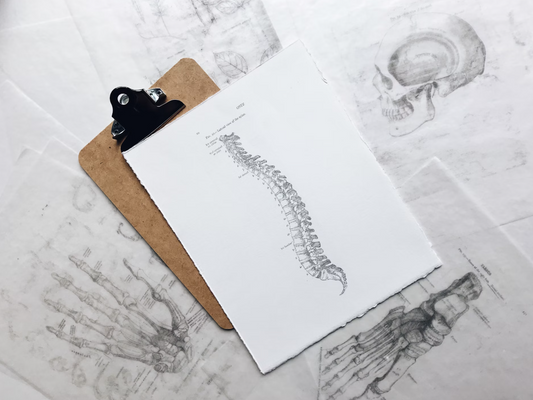Breathing is often associated with sustaining life and maintaining energy, but did you know that it also plays a crucial role in our physical coordination and stability? Every movement, whether it’s as simple as standing or as complex as performing an athletic maneuver, relies on a delicate balance between body mechanics and breath. In this article, we’ll explore how breathing influences coordination and stability, how it can enhance physical performance, and share tips for integrating breathing techniques into your routine to improve balance.
The Connection Between Breathing and Balance
Breathing and balance might seem like unrelated concepts, but they are deeply intertwined. Respiration doesn’t just provide oxygen to your body—it also helps regulate internal pressure and supports the muscles that keep you upright and stable.
1. The Role of the Core Muscles: The diaphragm, along with other core muscles, plays a key role in maintaining stability. When you breathe deeply and correctly, you engage your core muscles, which include the abdominal muscles, back muscles, and the pelvic floor. These muscles provide a solid foundation that helps with posture, balance, and movement. Without proper core activation through breathing, it becomes harder to maintain your balance, particularly in dynamic or challenging positions.
2. Breathing and Proprioception: Proprioception refers to the body’s ability to sense its position in space. Controlled, mindful breathing helps enhance proprioception, allowing you to become more aware of your body’s alignment and movement patterns. This awareness helps improve coordination by providing real-time feedback that ensures you maintain your stability during various activities.
3. The Vagus Nerve and Coordination: The vagus nerve, which is activated by deep breathing, influences the autonomic nervous system. When you engage in deep, slow breathing (such as diaphragmatic breathing), the vagus nerve helps relax the body, calm the nervous system, and improve your coordination. A calm nervous system reduces muscle tension and allows for more fluid, controlled movements, contributing to greater overall balance.
Benefits of Breathing for Balance and Coordination
1. Enhanced Posture and Stability: Proper breathing, especially diaphragmatic breathing, helps improve posture by activating and stabilizing the muscles of the core. A strong core leads to better stability, as your spine is supported and your muscles are better able to respond to shifting forces, whether in sports or everyday movements.
2. Increased Flexibility and Movement Control: Breathing techniques such as yoga breathing (pranayama) or Pilates breathing help to create more space in the body, allowing for smoother, more controlled movement. When you coordinate breath with movement, you can increase flexibility while maintaining balance, which is particularly useful in practices like dance, yoga, and athletic training.
3. Stress Reduction and Improved Focus: Breathing exercises help reduce tension in the body and calm the mind. This makes it easier to focus on maintaining balance during activities that require precision and control. When you're calm and centered, your body is more capable of executing movements with stability and coordination.
4. Greater Endurance and Performance: In activities that require prolonged balance, like standing on one leg or holding a yoga pose, breathing deeply and efficiently ensures that your muscles are receiving the oxygen they need to perform. This can help reduce fatigue and improve your endurance, allowing you to maintain better stability for longer periods of time.
How to Use Breathing to Improve Balance
Integrating breathing techniques into your routine can have a profound impact on your balance and coordination. Here are some practical tips and exercises to help you make the most of your breath:
1. Practice Diaphragmatic Breathing: Start by lying down or sitting comfortably. Place one hand on your chest and the other on your abdomen. Inhale deeply through your nose, letting your belly rise while keeping your chest relatively still. Exhale slowly through your mouth, allowing the air to leave your body naturally. This deep breathing technique engages the core muscles and helps you activate the muscles necessary for stability.
2. Incorporate Breathing with Movement: Try incorporating breathing into activities that challenge your balance. For example, when practicing yoga or Pilates, synchronize your breath with your movements. Inhale as you lengthen or expand your body, and exhale as you move deeper into a stretch or hold a position. The connection between breath and movement will help you feel more grounded and stable.
3. Use Breath to Align Your Posture: Take a few moments throughout the day to check in with your posture. Inhale deeply, lifting through the crown of your head and lengthening your spine, and exhale as you relax into the alignment. Breathing deeply helps activate the muscles that support your posture and can prevent slumping, which can throw off your balance.
4. Focus on Slow, Steady Breaths in Challenging Positions: When performing a challenging balance pose, like standing on one leg or doing a one-legged squat, take slow, controlled breaths. Focus on your inhale as it energizes your body and your exhale as it helps you stabilize and relax. Use your breath to keep your mind calm and focused, which will allow you to maintain control over your movements.
Breathing Exercises for Coordination and Stability
1. Box Breathing: Box breathing, also known as square breathing, is a great way to increase focus, reduce stress, and improve stability. Inhale for a count of four, hold your breath for a count of four, exhale for a count of four, and hold again for a count of four. Repeat for several cycles. This technique helps center your mind and calm your nervous system, supporting better balance during movement.
2. Alternate Nostril Breathing: This yoga breathing technique is known for promoting mental clarity and balance. Close your right nostril with your thumb, inhale deeply through your left nostril, close your left nostril, and exhale through your right nostril. Inhale again through the right, close it, and exhale through the left. Alternate for several minutes. This practice helps balance the left and right hemispheres of the brain, promoting coordination and stability in your movements.
3. Standing Balance Breathing: Stand tall with your feet hip-width apart. As you breathe in, raise one arm overhead while grounding through the opposite foot. As you exhale, lower your arm and shift your weight to the other side. This exercise helps coordinate your breath with body alignment and supports stability in standing balance positions.
Conclusion
Breathing is more than just an automatic process; it is a powerful tool that can influence your physical coordination, stability, and overall movement. By learning to breathe deeply and mindfully, you activate your core muscles, improve your posture, and enhance your ability to stay balanced in dynamic situations. Whether you’re practicing yoga, working out, or simply trying to improve your daily movements, integrating proper breathing techniques can make a noticeable difference in your ability to maintain stability and coordination.
By taking the time to focus on your breath, you not only strengthen your physical foundation but also calm your mind, creating a balanced, harmonious relationship between body and breath. So, the next time you work on improving your balance, remember to breathe deeply—your body will thank you!




